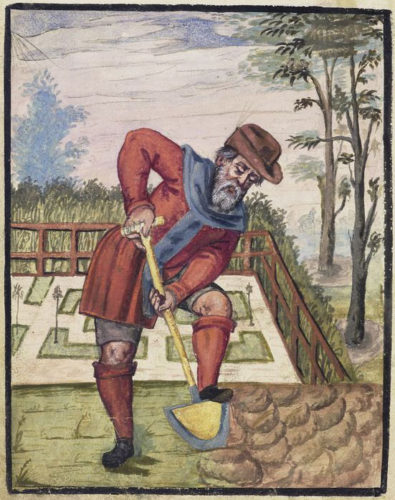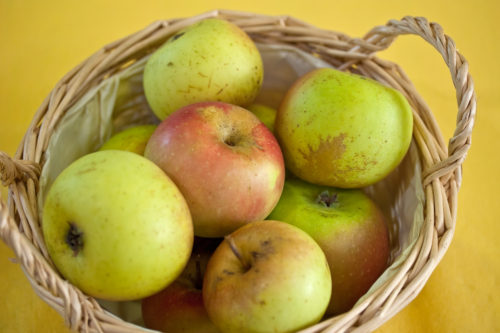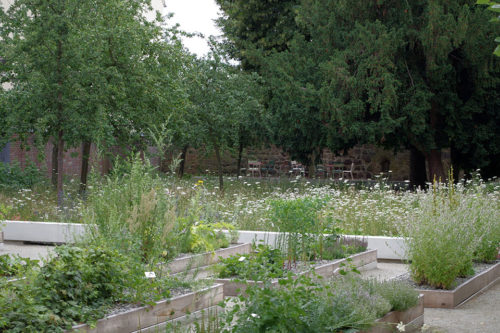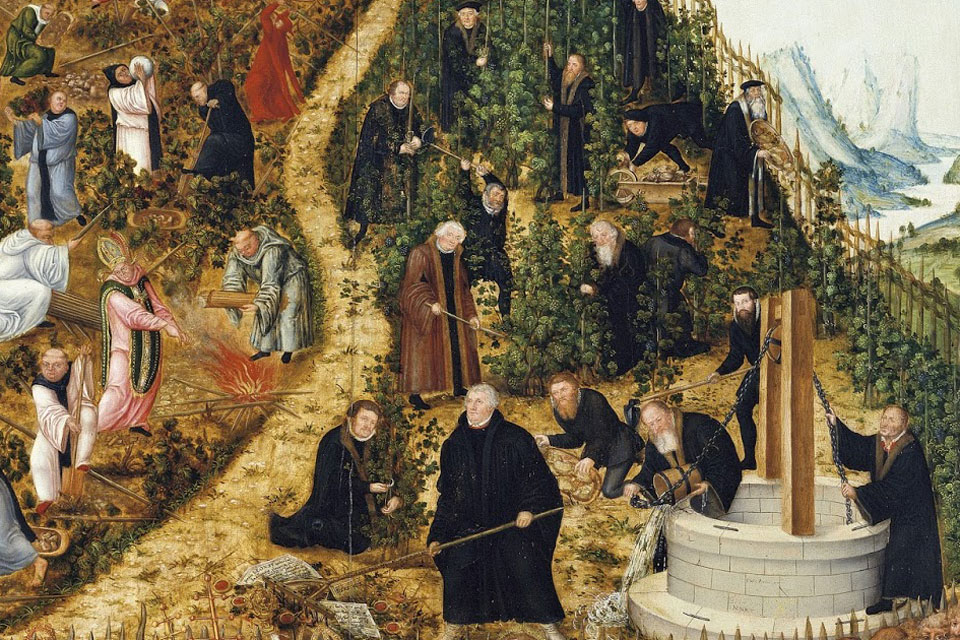“I have planted a garden and dug a well. Now, come and be crowned with a wreath of roses and lilies…”

Thus, wrote Martin Luther (1483 – 1546) in the summer of 1525 to his best friend, Spalatin, to announce his marriage to Katharine von Bora.
In 1522 Martin Luther had returned to Wittenberg from his sojourn at Wartburg Castle after the Diet of Worms. Here, he once more set up his home at the Augustinum, the house of his order, the Augustinian monks. In 1525, however, Luther married Katharina von Bora, with whom he began to organise what is now called the Luther-House as a University College. Here, he entertained students and numerous visitors and friends, who came to sit if not at the feet at least at the table of the great church reformer. It is believed that the household counted up to 50 persons from time to time.
One of Käthe von Bora’s primary jobs was to cater for the large household and part of this work was to work their garden. Later, this was the inspiration for the cultural construction of the ideal Protestant vicarage, in which – according to Luther – the vicar and his wife were expected to see themselves as primarily responsible for their house, household and congregation as if they were apprenticed to God. When the couple had their first child, Luther wrote that if he “might only go on living, he would joyfully be a gardener”.
Unfortunately, not many accounts from the household of Martin Luther have been preserved, and we don’t have an actual plan of how it looked. From his letters, however, we are rather well informed about what his garden looked like and what crops it yielded. We also know that it in all likelihood continued all the way down to the walls of the city.

It is likely that the first plot was laid out as a simple knotted garden with raised beds surrounded by paths and with his well at the centre. Later, the family acquired more land; this was probably cultivated on a larger scale, but still as a Kitchen-garden. In 1442, Luther paid taxes on thirteen pigs, five cows, nine calves, three goats, a horse and a dog (which Luther called “devil”).
One of the challenges was to lay one’s hand at good and varied seeds, and Luther’s letters to acquaintances and friends are full of his begging. Thus we learn that Luther sought out seeds from Nuremberg, while he ordered seed from Erfurt to sow radishes, for which the town was known. Also, medicinal herbs as Borage and Anchusa were on his list. Other flowers like violets, roses, and lilies, which were grown for their scent, which could be trapped in alcohol or oil and used to avert evil smells clinging to clothes and persons.
Another important crop was fruit. Not just apples, pears, cherries, peaches, mulberries, medlars, and vines are mentioned. The family also grew figs, oranges, and laurels in pots that they might winter inside. To cater for fruit trees he employed a special master taking care of grafting. An important element in the garden were the bees, which yielded honey, wax, and pollination.

We don’t know which tools, Martin Luther, Katharina, or their servants used when gardening. We do know, however, that nobles – who were as obsessed with the idea of gardening as their minions – possessed beautiful sets of garden tools. One particular set is preserved from the court in Dresden from 1571 made of iron and silver consisting of a full set of tools intended for pruning and grafting. Other tools preserved in the Ducal collection, were fancy scissors mounted on long sticks intended for pruning. These belonged to the Elector of Sachsen, August, who delighted in gardening, and who also wrote a small work on gardening, called the Künstlich Obst und Gartenbüchlein.
Unfortunately, the Lutherhaus in Wittenberg has not been interested in trying to resurrect the garden of Martin Luther. Instead, they have supported the rather “silly” project of planting a “global” garden, where notabilities from all the Lutheran churches and countries in the world have been invited to plant a tree as part of the 500-year anniversary in 2017.
Luckily, visitors to Wittenberg only have to walk down-town to visit the house of Martin Luther’s friend and co-reformer, Philip Melanchthon. Here, curators have recreated a garden from the Reformation period; this time, though, with more focus on medicinal plants. Apart from being an excellent grammarian and university professor, he also dabbled in the art of healing.
Later, memories from Protestant vicarages often recount stories of how the Pastor worked his garden as if it was Paradise. It was Martin Luther, though, who began the tradition when he wrote to Spalatin.
SOURCES:
“… will Ich Gärtner serden!”Über die Bedeutung des gartens in der Geschichte des evangelischen Pfarrhauses.
By AntjeHeling-Grewolls and Arnd Heling
In Zeitzeichen 2010, July pp. 32 – 36.
FEATURED PHOTO:
Detail of: “The Vineyard of the Lord” by Lucas Cranach, hanging in St. Mary’s in Wittenberg 1569, but also used in a retable form Salzwedel (from which this detail is taken). “The Vineyard of the Lord” depicts a mountain with a vineyard divided by a fence. At the left representatives of the Roman Catholic Church are busy destroying the garden. At the right Luther with the other Reformers are planting, pruning, and nursing the plants by watering them and pulling out the weeds.
